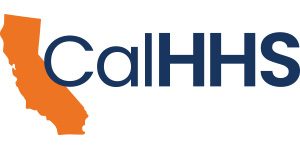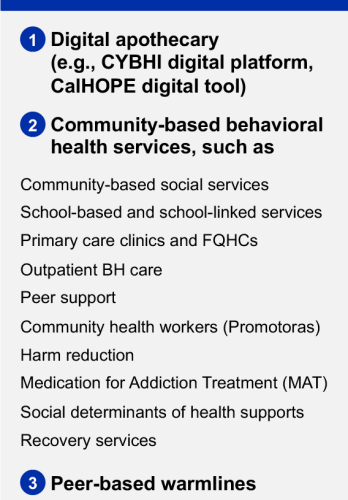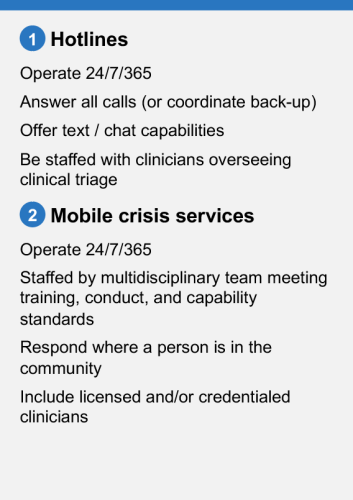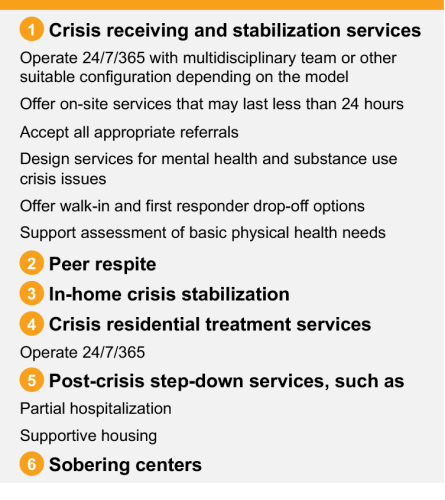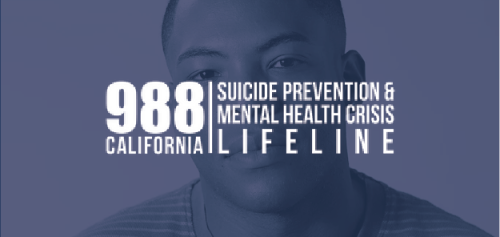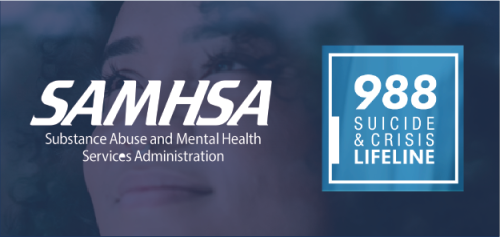988 Suicide & Crisis Lifeline
The 988 Lifeline is an easy to remember three-digit number that anyone can call to receive support when experiencing a suicidal, mental health and/or substance use- related crisis. To reach the Lifeline, people can call or text 988 or chat at Lifeline (988lifeline.org). People who are worried about a loved one who may need crisis support may also use 988 to receive guidance and support. This number is in addition to existing national, state-wide, and local call lines for emergency and non-emergency support.
There are additional national, state-wide, and local call lines for emergency and non-emergency support.
- 988 Suicide and Crisis Lifeline FAQ
- Relationship between 988 and 911 FAQ
- Additional information regarding 988 can be found on SAMHSA’s 988 Website, including answers to Frequently Asked Questions.
988 Suicide & Crisis Lifeline
The 988 Lifeline is an easy to remember three-digit number that anyone can call to receive support when experiencing a suicidal, mental health and/or substance use- related crisis. To reach the Lifeline, people can call or text 988 or chat at Lifeline (988lifeline.org). People who are worried about a loved one who may need crisis support may also use 988 to receive guidance and support. This number is in addition to existing national, state-wide, and local call lines for emergency and non-emergency support.
There are additional national, state-wide, and local call lines for emergency and non-emergency support.
- 988 Suicide and Crisis Lifeline FAQ
- Relationship between 988 and 911 FAQ
- Additional information regarding 988 can be found on SAMHSA’s 988 Website, including answers to Frequently Asked Questions.
988 and the Crisis Care Continuum
As of July 16, 2022, the National Suicide Prevention Lifeline number transitioned to an easy-to-remember 3-digit number (988). 988 is easy to remember so that anyone can call, text, or chat to receive support when experiencing a suicidal, mental health and/or substance use related crisis. In September 2022, Governor Gavin Newsom signed the Miles Hall Lifeline Act (AB 988) into law to ensure and expand services for Californians experiencing a behavioral health crisis.
When Californians dial 988, they will be directed to one of 12 Lifeline crisis call centers. The call will be routed based on the caller’s area code. California’s call centers are part of the broader 988 Lifeline crisis center network. If a local crisis center is unable to take the call, the caller is automatically routed to a national backup crisis center.
The 988 Lifeline represents an unprecedented opportunity to design and build a robust behavioral health crisis prevention, response and care system.
Learn more about the 988-Crisis Policy Advisory Group.
California’s Plan for a Comprehensive 988-crisis System
California’s Plan for a Comprehensive 988-Crisis System In January of 2025, Building California’s Comprehensive 988-Crisis System: A Strategic Blueprint (AB 988 Five-Year Implementation Plan) was submitted to the California Legislature. The Plan includes a series of recommendations and implementation activities to achieve a comprehensive 988-crisis system:- increase public awareness of and trust in 988 and behavioral health crisis services;
- establish the systems, inclusive of technology, policies, and practices, to connect help seekers to the appropriate call/chat/text takers;
- support the 988 system in delivering a high-quality response for all Californians; and
- increase coordination of behavioral health crisis services. It further describes cross-cutting recommendations related to equity, funding and sustainability, data and metrics, and peer support.
Two supplemental documents were also included in the submission to the legislature:
AB 988 Chart Book: An Inventory of Needs, Services and Gaps of the Behavioral Health Crisis System: The AB 988 Chart Book includes recent evaluations, studies, and analyses by state agencies and independent evaluators, public health data, and information from interviews, surveys, and discussions about California’s crisis related needs and services. Critical findings from the assessment are summarized in the AB 988 Five-Year Implementation Plan.
AB 988 Community Engagement Report: The Community Engagement Report includes findings and themes from a series of community focus groups that included individuals with co-occurring disorders, family members who lost someone to suicide, Tribal members, formerly unhoused individuals, LGBTQIA+ individuals, older adults, young adults, and other populations of focus.
California Behavioral Health
Crisis Care Continuum Plan

The Crisis Care Continuum Plan (CCC-P) articulates a vision for the future state of behavioral health crisis services in California. The plan is inclusive of crises relating to suicide, mental health, or substance use challenges.
The CCC-P incorporates inputs from a wide range of leaders across California, summarizes the current state of behavioral health crisis care, describes a statewide vision for the future, and outlines implementation considerations for the current system to better serve Californians.
This CCC-P is intended to start a discussion and elicit feedback on desired outcomes, potential approaches, implementation considerations, and strategies to engage communities across the state. As required by AB 988, California Health and Human Services Agency (CalHHS) will work with leaders at all levels to develop a refined, detailed implementation plan to improve coordination, access, quality, and equity in statewide behavioral health crisis prevention and response.
CalHHS Staff Presentations on Crisis Continuum of Care Plan (CCC-P) to Behavioral Health Task Force (BHTF)
The CCC-P’s future state vision is focused on California’s behavioral health crisis care system and how it has been and will be further developed to ensure that its individual components can prevent, respond to, and stabilize individuals in crisis – including transitions to on-going care.
Components of community-based crisis systems
Behavioral Health crisis systems strive to serve anyone, anywhere and anytime and fall along a continuum.
In order to prevent behavioral health crises and deliver high-quality crisis care to all Californians in need, CalHHS envisions a future state system that is driven by three strategic priorities:

Build towards consistent access statewide
Across California counties, there are different approaches and resources dedicated to address crisis prevention, stabilization, and response, with considerable geographic variation in the availability of services (e.g., county-run warmlines*, crisis receiving facilities) and varying approaches to coverage of crisis care across public and private insurance.
Enhance coordination across and outside the continuum
Clear definition of roles and responsibilities to ensure there is an accountable public entity that is able to bring the various stakeholders together to establish common goals, protocols and agreements to ensure effective communication and coordination of services along the continuum of care.
Design and deliver a high quality and equitable system for all Californians
CalHHS asserts that an understanding of current needs, disparities, and experiences is needed to ensure consistent quality standards and target outcomes with a population-based approach that is inclusive and culturally relevant. Discussions with California Department of Health and Human Services (CalHHS), Department of Health Care Services (DHCS), subject matter experts *Warmlines are a service, often peer-run, that offers callers emotional supportCalHHS envisions a future state system that provides an array of essential crisis services and baseline service levels across crisis prevention, response, and stabilization to all Californians in need. This array of essential crisis services describes the baseline in the future state, recognizing that specific populations, including children, youth, and older adults, may need additional services based on characteristics or needs.
Build towards consistent access:
Essential behavioral health crisis care services
Additional Resources
For communication resources and SAMHSA Points of Contact:
- 988 Partner Toolkit
- 988 Messaging Framework
- To Contact SAMHSA for 988 information: 988Team@samhsa.hhs.gov
- How to report on 988: America’s Suicide Prevention and Mental Health Crisis Lifeline
For more information on California’s 988 Suicide Prevention & Mental Health Crisis Lifeline, visit 988 California.

